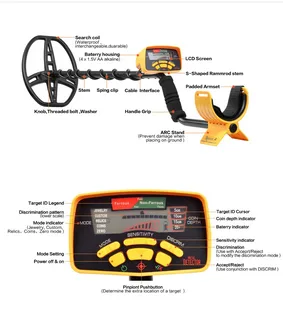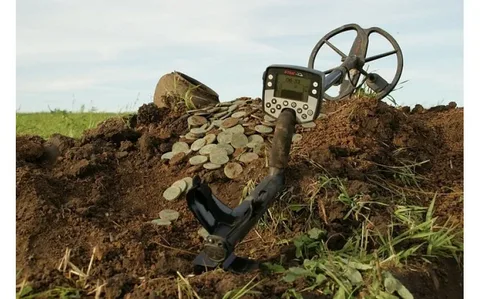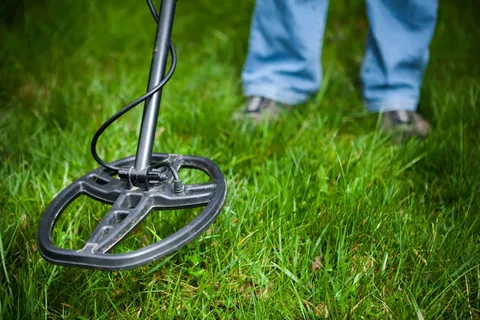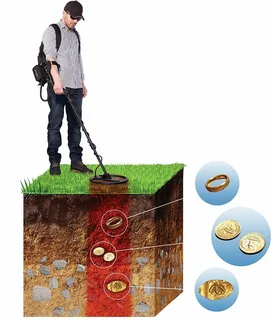Gold Panning Equipment: Exploring the Best Options for Beginners If you're just starting out in the world of gold panning, it's essential to have the right equipment to maximize your chances of success. With the abundance of options available, it can be overwhelming to choose the best gear for your needs. In this guide, we'll explore the top gold panning equipment options for beginners, helping you make an informed decision and kickstart your gold panning journey. Whether you're looking for pans, sluice boxes, or classifiers, we'll cover the essential equipment you need to get started on your quest for gold.
Gold panning is a popular hobby for beginners looking to try their hand at prospecting for gold. The right equipment can make all the difference in your success as a gold panner. Some key pieces of equipment to consider for beginners include a gold pan, a classifier, snuffer bottle, and a shovel. A gold pan is essential for swirling water and material to separate the gold from other sediment. A classifier is used to remove large rocks and debris from your material, making it easier to pan for gold. A snuffer bottle is useful for sucking up small gold flakes, while a shovel is necessary for digging and moving large amounts of material. These tools can help beginners get started with gold panning and increase their chances of finding gold.
The Ultimate Guide to Essential Gold Panning Equipment

Gold panning equipment is essential for anyone looking to try their hand at the rewarding hobby of gold panning. This gear usually consists of a gold pan, a classifier, a shovel, and possibly a sluice box or a gold dredge. The gold pan is the most basic and important tool, allowing you to separate gold nuggets from other sediments. A classifier, or sieve, is used to remove larger debris, while a shovel is necessary for digging and moving sediment. For those looking to upgrade their equipment, a sluice box or gold dredge can help increase the efficiency of gold recovery.
The Ultimate Guide to Essential Gold Panning Equipment is a comprehensive resource for anyone looking to get started in the exciting hobby of gold panning. This guide covers all the essential equipment you'll need, including pans, classifiers, sluice boxes, and more. It also provides detailed information on how to use each piece of equipment effectively, as well as tips and techniques for successful gold panning. Whether you're a novice or experienced prospector, this guide is a valuable tool for maximizing your chances of striking it rich.
Top 10 Must-Have Tools for Successful Gold Panning

1. Gold Pan: The most essential tool for gold panning, used to separate gold from debris. 2. Classifier: Helps to effectively separate larger rocks and debris from the finer sediment, making the panning process more efficient. 3. Sluice Box: A long, narrow box equipped with ridges and mats to catch gold as water passes through, allowing for larger quantities to be processed at once. 4. Snuffer Bottle: Used to suck up small gold flakes and particles from the pan or crevices in the rocks. 5. Magnifying Loupe: Enables a closer examination of potential gold specimens to determine their purity and value. 6. Crevice Tool: Essential for reaching into tight spaces and crevices where gold may be hiding. 7. Shovel and Pick: For breaking up rocky and compacted soil to access deeper layers that may contain gold deposits. 8. Gold Testing Kit: Used to verify the authenticity and purity of gold found during panning. 9. Gloves: Protects hands from cuts, blisters, and exposure to cold water during the gold panning process. 10. Waterproof Boots: Provides comfort and protection while standing in water for extended periods during gold panning expeditions.
Choosing the Right Gold Panning Equipment for Beginners

Gold panning is a popular and accessible hobby for beginners, but choosing the right equipment is crucial for success. The basic equipment includes a gold pan, a classifier, a snuffer bottle, and a small shovel or scoop. It's important to find a gold pan that is both durable and easy to use, as well as a classifier that will help you separate larger rocks and debris from the smaller, gold-bearing material. A snuffer bottle is necessary for sucking up small gold flakes and nuggets, and a small shovel or scoop will help you efficiently move material around while panning. Additionally, it's a good idea to invest in a pair of water-resistant gloves to protect your hands while panning. This basic equipment will set you up for a successful gold panning experience as a beginner.
Pro Tips for Buying Quality Gold Panning Gear

When buying quality gold panning gear, it's important to consider the following pro tips: 1. Research the different types of gold panning equipment available, such as pans, classifiers, sluice boxes, and suction dredges. Understand the features and functionality of each to make an informed decision. 2. Look for reputable brands and manufacturers known for producing high-quality gold panning gear. Read customer reviews and testimonials to gauge the reliability and performance of the products. 3. Consider the versatility and durability of the equipment. Opt for gear that is suitable for various gold panning conditions and can withstand frequent use in rugged environments. 4. Compare prices from different retailers to ensure you're getting the best value for your money. Keep in mind that quality gear may come with a higher upfront cost, but it can ultimately provide better results and last longer. 5. Seek recommendations from experienced gold prospectors and enthusiasts who can offer valuable insights and advice on selecting the right gear for your needs. By following these pro tips, you can make an informed decision when purchasing quality gold panning gear and enhance your prospecting experience.
How to Use Gold Panning Equipment Like a Pro
See also: best time to buy gold
Gold panning is a traditional method used to search for gold in rivers and streams. To use gold panning equipment like a pro, start by finding a good location with a high likelihood of finding gold. Next, carefully scoop up gravel and sediment from the riverbed into your gold pan. Submerge the pan in water and vigorously shake it to separate the heavier materials, including gold, from the lighter ones. Tilt the pan to let the water carry off the lighter materials, leaving behind the gold. Repeat this process until all that's left in the pan is the gold and black sand. Lastly, carefully pick out the gold with tweezers or a snuffer bottle. Remember to always follow local rules and regulations when panning for gold. With practice and patience, you can become a pro at using gold panning equipment.
The Evolution of Modern Gold Panning Equipment
The evolution of modern gold panning equipment has been marked by advancements in technology and materials. Traditional gold panning involved using a simple pan to separate gold from sediment, but today's equipment includes sluice boxes, metal detectors, and high-tech dredges. One significant development in gold panning equipment is the advent of sluice boxes, which use riffles and mats to efficiently trap gold particles while allowing lighter sediment to wash away. Metal detectors have also revolutionized gold prospecting by helping to pinpoint areas of high gold concentration. Furthermore, modern dredges have made it easier to extract gold from underwater deposits. These machines use suction to bring sediment and gold to the surface, making it possible to recover gold from areas that were previously inaccessible to traditional panning methods. In terms of materials, modern gold panning equipment is often made from lightweight and durable materials such as aluminum and plastic, making it easier for prospectors to carry and use their tools in remote locations. Overall, the evolution of modern gold panning equipment has made it more efficient and accessible for prospectors to extract gold from various terrains. These advancements have contributed to the continued popularity of gold prospecting as a hobby and a commercial pursuit.
DIY Gold Panning Equipment: Building Your Own Tools
DIY Gold Panning Equipment: Building Your Own Tools is a comprehensive guide that provides step-by-step instructions for creating your own gold panning equipment. The book covers a variety of methods for constructing tools such as a gold pan, classifier, sluice box, and more using readily available materials. It also includes tips and techniques for improving the effectiveness of your homemade equipment. Whether you're a beginner or experienced gold prospector, this guide can help you save money by building your own tools for gold panning.
The Best Gold Panning Equipment for Small-Scale Mining
The best gold panning equipment for small-scale mining includes a gold pan, classifier, snuffer bottle, and a shovel. A gold pan is essential for separating gold from other materials, while a classifier helps to sift through larger debris. A snuffer bottle is used to suck up the gold flakes, and a shovel is necessary for digging and moving materials. These basic tools are crucial for effective and efficient gold panning in small-scale mining operations.
Essential Maintenance Tips for Your Gold Panning Gear
See also: metal detectors for treasure hunting
Regularly clean your gold panning gear with water and a mild detergent to remove dirt, debris, and built-up residue. Avoid using harsh chemicals or abrasive cleaners that could damage the equipment. Inspect your gold panning equipment after each use to identify any wear and tear or potential damage. Replace any worn-out or damaged parts to ensure optimal performance. Store your gold panning gear in a dry and secure location to prevent rust and deterioration. Consider using protective cases or storage containers to keep your equipment safe and organized. Periodically lubricate moving parts, such as hinges and clasps, to maintain smooth operation. Use a suitable lubricant recommended by the manufacturer to prevent corrosion and friction. Check and tighten any loose screws, nuts, or bolts on your gold panning equipment to keep everything secure and stable during use. Follow any specific maintenance guidelines provided by the manufacturer for your gold panning gear to ensure proper care and longevity. Regular maintenance will help preserve the quality and functionality of your equipment for future gold prospecting endeavors.
Upgrading Your Gold Panning Equipment: What to Consider
When considering upgrading your gold panning equipment, it's important to first assess your current gear and identify any limitations or areas for improvement. This can include the effectiveness of your pan, the size and design of your sluice box, the quality of your classifier, and the overall comfort and convenience of your tools. Once you have identified any areas for improvement, research and compare different options for upgrading your equipment. This can involve looking for more advanced designs, durable materials, and improved functionality. Consider factors such as portability, ease of use, and the specific features that will be most beneficial for your gold panning activities. It's also important to consider your budget and prioritize which upgrades will have the most significant impact on your gold panning experience. Investing in high-quality equipment can improve your efficiency and increase your chances of finding gold, but it's important to find a balance between cost and value. Before making any purchases, read reviews and seek recommendations from experienced gold prospectors. They can provide valuable insights into the best equipment for your specific needs and help you make informed decisions. Ultimately, upgrading your gold panning equipment can enhance your overall experience and improve your chances of finding gold. By carefully considering your current gear, researching your options, and seeking advice from experienced prospectors, you can make the most effective and rewarding upgrades to your equipment.
